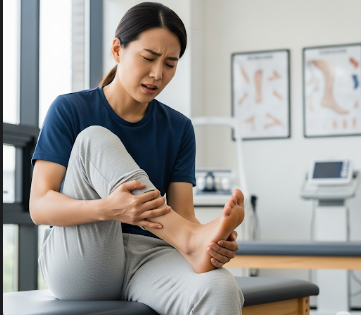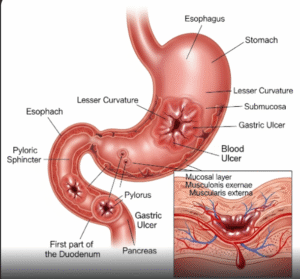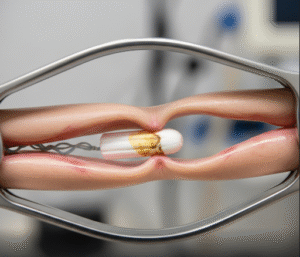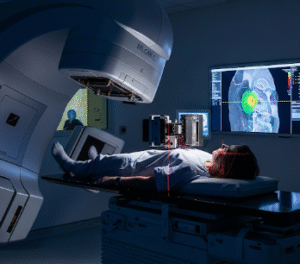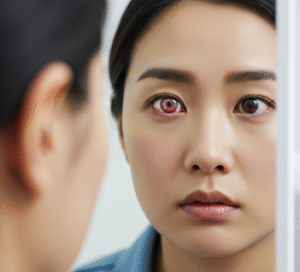Overview
Heel pain is a common musculoskeletal complaint characterized by discomfort, soreness, or aching in the heel area, often affecting walking, running, or standing. It can occur suddenly or gradually and may be acute or chronic, depending on the underlying cause.
The heel comprises bones, ligaments, tendons, and soft tissues, and pain can arise from plantar fasciitis, Achilles tendinopathy, bursitis, or fractures. Proper diagnosis and treatment are essential to restore mobility and prevent long-term complications.
In South Korea, specialized orthopedic clinics, podiatry centers, and sports medicine hospitals provide advanced diagnostic tools, personalized treatment plans, and minimally invasive interventions for heel pain.
Key Facts
➲ Heel pain commonly originates from plantar fascia inflammation, Achilles tendon disorders, or heel bone spurs.
➲ It may be acute (injury-related) or chronic (overuse or degenerative conditions).
➲ Pain is often worse in the morning or after prolonged rest.
➲ Risk factors include obesity, improper footwear, high-impact activities, and age-related changes.
➲ Korea offers advanced imaging, physiotherapy, and minimally invasive treatments to relieve heel pain.
What is Heel Pain?
Heel pain refers to discomfort or tenderness in the posterior, plantar, or medial aspect of the heel.
Common characteristics include:
➲ Sharp, stabbing pain during the first steps in the morning.
➲ Dull or aching pain after prolonged activity or standing.
➲ Localized tenderness over the heel bone or surrounding soft tissues.
➲ Sometimes associated with swelling, redness, or warmth in the affected area.
The pain may be unilateral or bilateral and can significantly impact daily activities, sports performance, and overall mobility.
What Symptoms Are Related to Heel Pain?
Heel pain can present with a variety of symptoms depending on the underlying cause:
➲ Pain at the bottom of the heel (plantar fasciitis).
➲ Pain at the back of the heel (Achilles tendonitis or bursitis).
➲ Tenderness when pressing the heel or ankle.
➲ Swelling, redness, or warmth in some cases.
➲ Pain worsened by prolonged standing, walking, or running.
➲ Stiffness and limited ankle or foot movement.
➲ Occasional heel bruising or visible bony bumps.
What Causes / Possible Causes
Heel pain can result from multiple musculoskeletal, neurological, or systemic factors:
1. Plantar Fasciitis
➲ Inflammation of the plantar fascia, the ligament connecting the heel to the toes.
➲ Often worse in the morning or after rest.
➲ Common in runners, overweight individuals, and those with flat feet.
2. Achilles Tendinopathy
➲ Degeneration or inflammation of the Achilles tendon at the back of the heel.
➲ Pain occurs during activity or stretching.
3. Heel Spurs
➲ Bony growths on the underside of the heel bone, often associated with plantar fasciitis.
➲ May cause localized tenderness.
4. Bursitis
➲ Inflammation of the bursa at the back of the heel (retrocalcaneal bursitis).
➲ Pain worsens with ankle movement.
5. Stress Fractures
➲ Small fractures in the heel bone (calcaneus) due to repetitive stress or trauma.
➲ Pain intensifies with weight-bearing activity.
6. Nerve-Related Causes
➲ Tarsal tunnel syndrome – compression of the tibial nerve causing heel pain, numbness, or tingling.
7. Other Causes
➲ Systemic conditions like arthritis, gout, or infection can occasionally present as heel pain.
When Should I See My Doctor?
Medical evaluation is necessary if:
➲ Heel pain persists for more than a few weeks despite rest and home care.
➲ Pain is severe, sudden, or associated with swelling and bruising.
➲ There is numbness, tingling, or weakness in the foot or ankle.
➲ Pain interferes with daily activities or exercise routines.
➲ Suspected stress fracture, infection, or systemic condition.
Early assessment ensures accurate diagnosis and prevents chronic disability.
Care and Treatment
Treatment depends on the underlying cause and may include conservative measures, medications, therapy, and surgical options:
1. Lifestyle and Self-Care
➲ Rest and avoid activities that aggravate heel pain.
➲ Use supportive footwear with cushioning.
➲ Apply ice packs to reduce inflammation.
➲ Maintain a healthy weight to reduce heel stress.
2. Medications
➲ NSAIDs for pain and inflammation.
➲ Topical analgesics applied to the heel.
3. Physical Therapy
➲ Stretching exercises for the Achilles tendon and plantar fascia.
➲ Strengthening exercises for foot and ankle muscles.
➲ Orthotic devices or heel pads to redistribute pressure.
4. Minimally Invasive and Surgical Options
➲ Corticosteroid injections for severe inflammation.
➲ Shockwave therapy for chronic plantar fasciitis.
➲ Surgical intervention for heel spur removal or refractory cases.
Treatment Options in Korea
South Korea provides state-of-the-art orthopedic and sports medicine care for heel pain:
Diagnosis in Korea
➲ X-rays and MRI to assess bone, tendon, and soft tissue involvement.
➲ Ultrasound imaging to detect plantar fascia or Achilles tendon abnormalities.
➲ Nerve conduction studies for tarsal tunnel syndrome if suspected.
Medical Treatments in Korea
➲ Tailored NSAID regimens, physiotherapy, and lifestyle guidance.
➲ Minimally invasive interventions such as shockwave therapy and injections.
➲ Orthotic devices designed for foot structure and activity level.
Surgical and Advanced Therapies
➲ Endoscopic or open surgery for plantar fascia release, tendon repair, or heel spur removal.
➲ Rapid postoperative rehabilitation for early return to activity.
➲ Multidisciplinary care combining orthopedics, physiotherapy, and pain management.
Rehabilitation and Support
➲ Personalized exercise programs to strengthen foot and ankle muscles.
➲ Gradual return to high-impact activities or sports.
➲ Long-term monitoring to prevent recurrence and maintain mobility.
Quick Highlights Box
➲ Heel pain affects the posterior, plantar, or medial aspect of the heel and can impair walking and standing.
➲ Common causes include plantar fasciitis, Achilles tendon disorders, heel spurs, bursitis, or stress fractures.
➲ Symptoms include pain, stiffness, swelling, and reduced mobility.
➲ Risk factors: obesity, high-impact activity, improper footwear, and aging.
➲ Korea provides advanced diagnostics, physiotherapy, orthotics, and minimally invasive surgical treatments.
➲ Early evaluation ensures effective management and prevents chronic disability.

